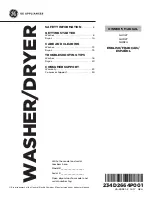
Transportation, storage and disposal
en
41
17 Transportation, stor-
age and disposal
17.1 Preparing the appliance
for transportation
Tip:
The appliance may contain re-
sidual water, which may drip out of it
when transported. The appliance
should be transported upright.
Requirements
¡
The condensation container is
emptied. Emptying the condensa-
tion container →
¡
The appliance has been switched
on.
→
1.
2.
and wait 5 minutes.
a
The condensation is drained.
3.
Switch off the appliance.
→
"Switching off the appliance",
4.
Remove the water drain hose from
the connection point.
→
"Water outlet connection types",
5.
Secure the water drain hose on the
appliance against unintentional
loosening.
Ensure that you do not bend the
water drain hose.
6.
Empty the condensation container
→
7.
Insert the condensation container
→
8.
Disconnect the appliance's mains
plug from the power supply.
a
The appliance is now ready to be
transported.
17.2 Disposing of old appli-
ance
Valuable raw materials can be re-
used by recycling.
WARNING
Risk of harm to health!
Children can lock themselves in the
appliance, thereby putting their lives
at risk.
▶
Do not install the appliance behind
a door as this may obstruct the ap-
pliance door or prevent it from
opening.
▶
With redundant appliances, unplug
the power cord. Then cut through
the cord and damage the lock on
the appliance door beyond repair
so that the appliance door will no
longer close.
1.
Unplug the appliance from the
mains.
2.
Cut through the power cord.
3.
Dispose of the appliance in an en-
vironmentally friendly manner.
Information about current disposal
methods are available from your
specialist dealer or local authority.
This appliance is la-
belled in accordance
with European Directive
2012/19/EU concerning
used electrical and elec-
tronic appliances (waste
electrical and electronic
equipment - WEEE).
The guideline determ-
ines the framework for
the return and recycling
of used appliances as
applicable throughout
the EU.








































